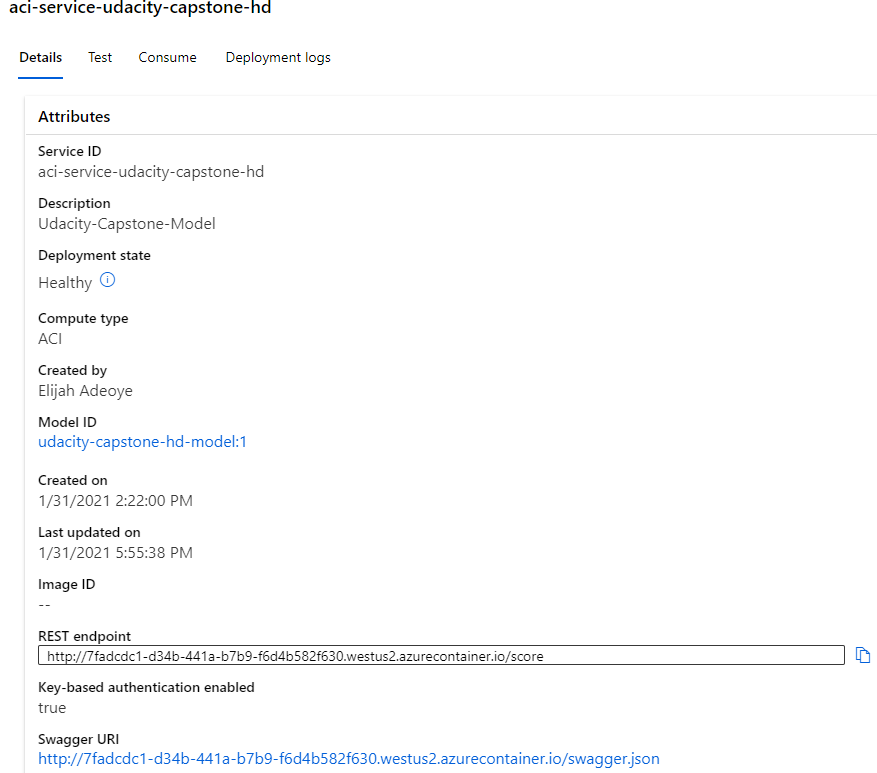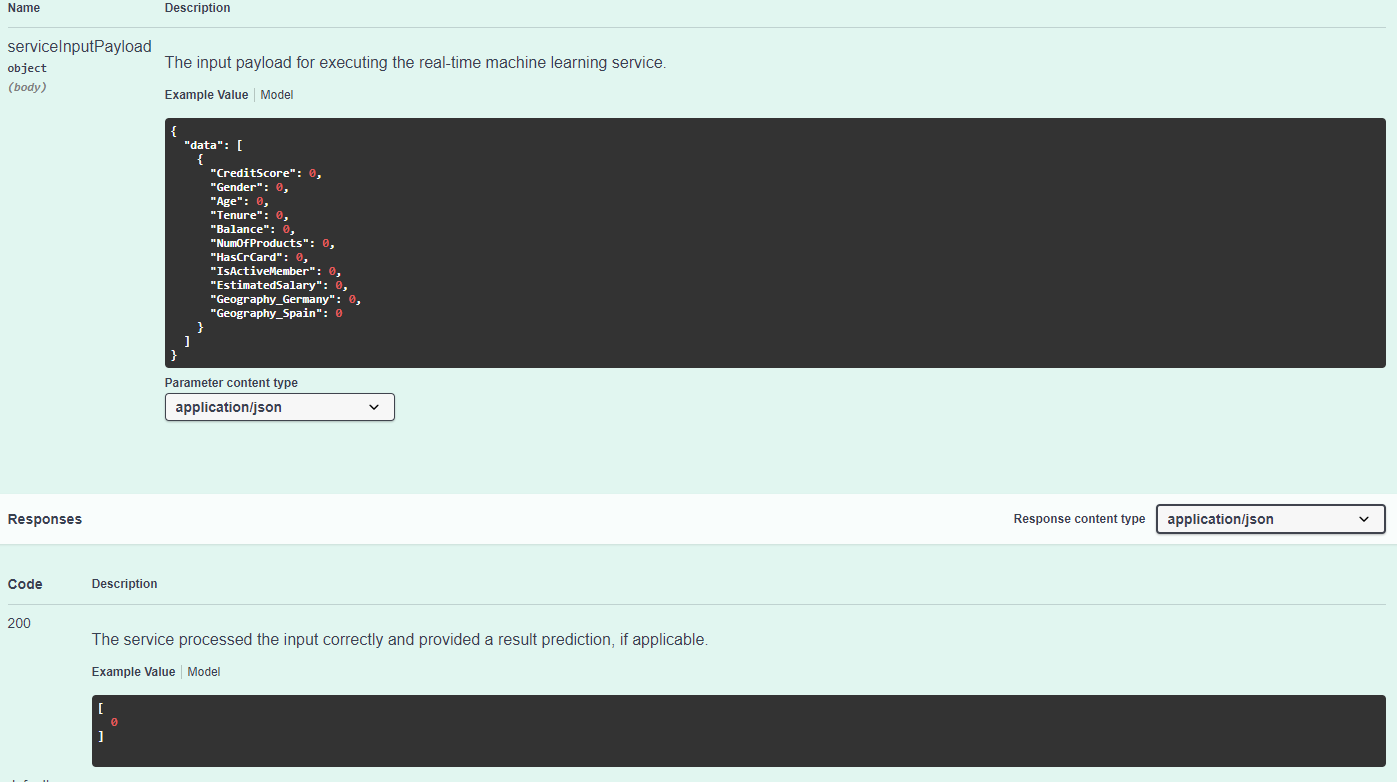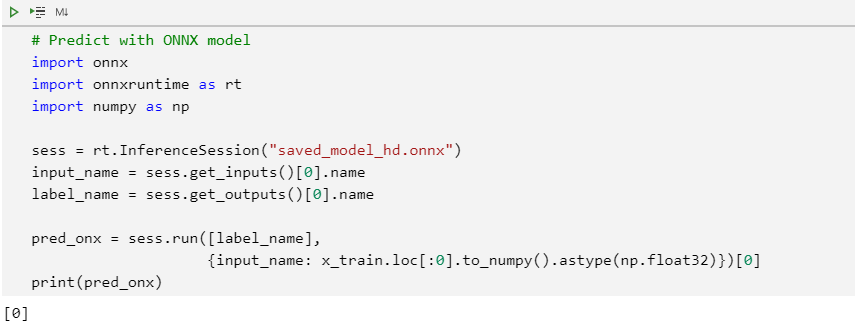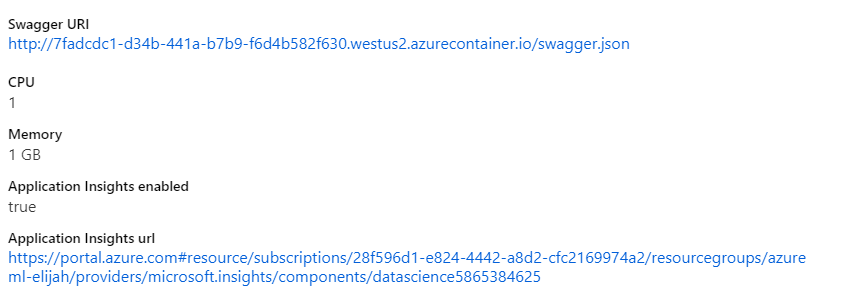Our objective is to leverage Azure’s Machine Learning (AML / ML) studio to train a cloud-based machine learning production model with AutoML and HyperDrive, deploy the best model, and retrieve its REST endpoint for consumption. The training data is from a bank with some customer information. Our machine learning goal is to predict if a customer will churn (close their accounts) or not given a set of predictors such as creditscore, geography of origin etc. This, therefore, is a classification problem.
The dataset contains 10,000 rows with each row containing information for a current or previous customer on their CreditScore, Geography, Gender, Age, Tenure, Balance, NumOfProducts, HasCrCard, IsActiveMember, EstimatedSalary, and importantly if the 'Exited' the bank or churned (11 columns in total). This is the predicted outcome of interest with which we can build a model to predict a current or future customer's propensity to churn.
The end product of this process is a reusable REST endpoint / HTTP API endpoint that can be consumed for real time inferencing (scoring). We will also perform load testing with Apache Bench simulating multiple POST requests to the endpoint. This helps us to benchmark our average response time to Azure’s 60 second benchmark and it allows us to check our model endpoint’s health status. Lastly, it is imperative that we wrap our experiments into reusable pipelines with Azure ML pipelines. This approach allows us to automate future predictive modeling via the pipeline’s REST endpoint.
To replicate these experiments in Azure ML (assuming you have provisioned an Azure ML workspace), simply download the automl.ipynb, hyperparameter_tuning.ipynb, and all the .py files in the 'scripts' directory. In total you should have 7 files in your root directory in Azure ML. The 'scripts' directory will be created, and their respective files copied, for you in Azure ML as you run the .ipynb notebooks for your experiments. An additional note is that we configure our experiment enviorment using a YAML configuration file. See the "conda_dependencies.yml" file for illustration. However, you do not need to download this file as we create the YAML file within our jupyter notebooks (automl and hypeparemeter_tun...).
Your project / root directory in Azure ML will most likely look like this when you run the .ipynb notebooks:
udacity-nd00333-capstone
├─ automl.ipynb
├─ hyperparameter_tuning.ipynb
├─ scripts
│ ├─ model_deployment
│ │ └─ score.py
│ ├─ preprocess
│ │ ├─ cleanse.py
│ │ └─ encode.py
│ └─ train
│ ├─ train.py
│ └─ train_test_split.py
└─ conda_dependencies.yml
Azure ML Experiments Architecture
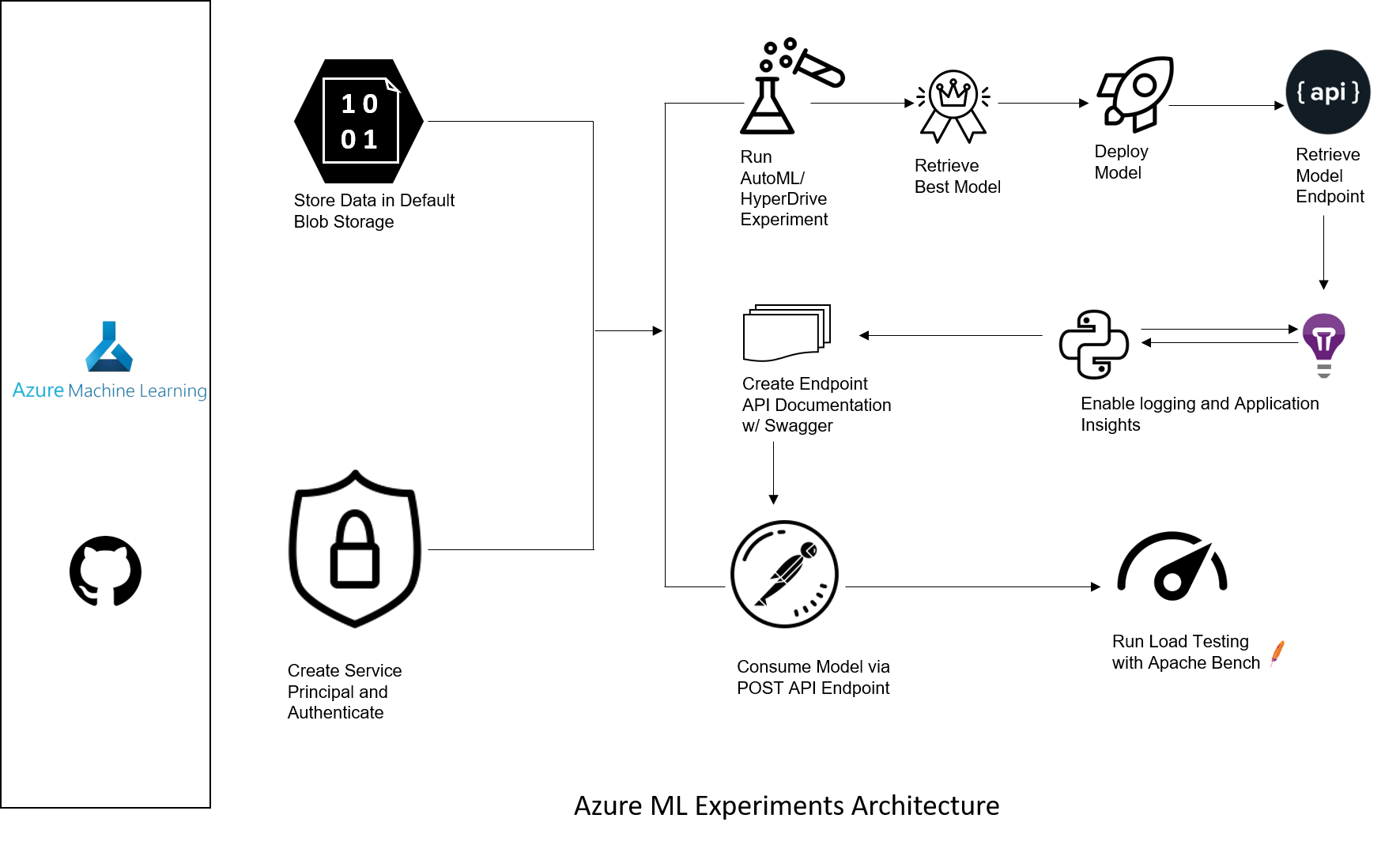
We will retrieve our bank data from a url, upload to blobstorage, and pass it as a Pipeline Step that is easily re-submitted for future experiments. We will also convert it to a more convenient pandas dataframe using AzureML's "Dataset".
from azureml.core import Dataset
dataUrl = 'https://raw.githubusercontent.com/aniruddhgoteti/Bank-Customer-Churn-Modelling/master/data.csv.csv'
ds = Dataset.Tabular.from_delimited_files(path = dataUrl)
ds = ds.to_pandas_dataframe()AutoML settings
We first need to configure our AutoML settings before running our experiment.
To do so, we will use Azure ML's AutoML config class to configure these settings.
Key highlights:
- We choose to block support vector machines (SVM) due to their generally longer computational times.
- We're setting this as a classification task (to predict customer churn: yes/no)
- Our goal is to "maximize" for AUC_weighted since accuracy could be misleading when dealing with imbalanced datasets
- Once any model hits an AUC of 0.95 within the 30 mins timeframe, we'll exit modeling else we'll pick the best performing model within the given timeout_minute parameter value.
Click to see code block snippet
from azureml.train.automl import AutoMLConfig
label = 'Exited' #predicted y_column
# Set parameters for AutoMLConfig
# Alternatively, we could separate this into automl_settings and automl_config objects.
automl_config = AutoMLConfig(
experiment_timeout_minutes=30,
blocked_models = ['SVM', 'LinearSVM'],
task='classification',
debug_log = 'automl_errors.log',
primary_metric='AUC_weighted',
experiment_exit_score = 0.95,
training_data=output_split_train.parse_parquet_files(),
label_column_name=label,
validation_data = output_split_test.parse_parquet_files(),
# n_cross_validations=10,
enable_voting_ensemble=True,
# enable_stack_ensemble=True, #If we want onnx compatible models
compute_target=aml_compute,
enable_onnx_compatible_models=True
)RunDetails widget
As part of our pipeline run we will run a RunDetails widget to show step runs with Azure’s Python SDK.
Best Model
Our AutoML best model scored a weighted AUC of approximately 0.883. The best model was an ensemble ("VotingEnsemble"). From visual inspection, the ensemble includes a standard scaler preprocessing step with an XGBoost classifier as one of the key classifiers.
[('datatransformer', DataTransformer(enable_dnn=None, enable_feature_sweeping=None, feature_sweeping_config=None, feature_sweeping_timeout=None, featurization_config=None, force_text_dnn=None, is_cross_validation=None, is_onnx_compatible=None, logger=None, observer=None, task=None, working_dir=None)), ('prefittedsoftvotingclassifier', PreFittedSoftVotingClassifier(classification_labels=None, estimators=[('25', Pipeline(memory=None, steps=[('standardscalerwrapper', ), ('xgboostclassifier', XGBoostClassifier(base_score=0.5, booster='gbtree', colsample_bylevel=1, colsample_bynode=1, colsample_bytree=1, e... min_impurity_decrease=0.0, min_impurity_split=None, min_samples_leaf=0.01, min_samples_split=0.15052631578947367, min_weight_fraction_leaf=0.0, n_estimators=50, n_jobs=1, oob_score=False, random_state=None, verbose=0, warm_start=False))], verbose=False))], flatten_transform=None, weights=[0.4, 0.06666666666666667, 0.2, 0.06666666666666667, 0.06666666666666667, 0.2]))]
See best AutoML model with its run id
We will be using a gradient boosting library (LGBM) with some default parameters for our HyperDrive experiment. For sampling, we will use random sampling to traverse our hyperparameter space. This allows us to balance finding the best model with computational performance and cost targets we might have for running experiments.
HyperDrive settings
Key highlights:
We will define an early termnination policy. The BanditPolicy states to check the job every 10 iterations ("evaluation_interval"). If the primary metric for a run after the 10th iteration falls outside of the top 10% range (slack factor), Azure ML will terminate the job. This saves us from continuing to explore hyperparameters that don't show promise of helping reach our target metric. This policy is first applied at interval 20 ("delay evaluation")
Here, we want HyperDrive to evaluate number of estimators, learning rate, maximum depth, and subsample for our tree-based light gradient boosted machine (LGBM) model.We also declare default hyperparameters in our train.py.
See reference: https://bit.ly/3rwh8Pc
- Learning rate: determines the impact of each tree on the final outcome
- Number of estimators: refers to the number of sequential trees to be modeled
- Subsample: is the fraction of observations to be selected for each tree. This is done by random sampling.
- Maximum depth: the maximum depth of a tree
We specify our range of hyperparameter options or distributions, to be randomly selected for an experiment, using two functions:
- Choice: specifies a discrete set of options from which to choose. For instance, there are only 3 options our random search algorithm can select for number of estimators.
- Uniform: creates a uniform distribution between the range specified from which we can randomly select.
Click to see code block snippet
# Specify parameter sampler
# See here for how to define spaces: https://bit.ly/3o6OAth7
ps = RandomParameterSampling( {
"--n_estimators": choice(10, 20, 100),
"--learning_rate": uniform(0.001, 0.1),
"--max_depth": choice(10, 20, 100),
"--subsample": uniform(0.1, 1.0)
}
)
# Specify a Policy | See docs here: https://bit.ly/3hfPGRM
early_termination_policy = BanditPolicy(slack_factor = 0.1, evaluation_interval = 10, delay_evaluation = 20)
est = Estimator(
source_directory=train_model_folder,
compute_target=aml_compute,
entry_script="train.py",
environment_definition=sklearn_env
)
# Create a HyperDriveConfig using the estimator, hyperparameter sampler, and policy.
hyperdrive_config = HyperDriveConfig(estimator=est,
policy=early_termination_policy,
hyperparameter_sampling=ps,
primary_metric_name="AUC_weighted",
primary_metric_goal=PrimaryMetricGoal.MAXIMIZE,
max_total_runs=20,
max_concurrent_runs=4)RunDetails widget
As part of our pipeline run we will run a RunDetails widget to show step runs with Azure’s Python SDK.
Best model and hyperparameters
The best LGBM model scored a weighted AUC of 0.900 (making it our best model for this classification task)
Below are the best model's' hyperparameters:
LGBMClassifier(boosting_type='gbdt', class_weight=None, colsample_bytree=1.0,
importance_type='split', learning_rate=0.05138822182057585,
max_depth=20, min_child_samples=20, min_child_weight=0.001,
min_split_gain=0.0, n_estimators=10, n_jobs=-1, num_leaves=31,
objective=None, random_state=None, reg_alpha=0.0, reg_lambda=0.0,
silent=True, subsample=0.9358133613033942,
subsample_for_bin=200000, subsample_freq=0)
Here's the best hyperdrive model from the Azure ML Models tab.

Also, below is a snapshot showing the best hyperdrive model with its run id.

We will deploy the best model (LGBM from HyperDrive model) and consume that model’s endpoint via an HTTP REST API. Below we see the endpoint as both deployed and active (or Deployment State: "Healthy").
Instructions on scoring with the deployed model endpoint
To score new data with the model endpoint, we need to pass in a scoring_uri and an authentication api key (see below) into our header. But first, we need to wrap our data into a json format. See code snippet below for an example of what format the model expects our data to be passed as and how to score data with the endpoint. See swagger documentation snapshot below for example input and output. Additionally, see the score.py script in the model_deployment folder for details on how the endpoint functions. Of notable mention is that we declare an init function that passes our model into a global variable that is eventually received in our run function. The run function receives our json data and inferences / predictions are made using the now passed model.
Click to see code block snippet
import requests
import json
# URL for the web service, should be similar to:
scoring_uri = 'http://ea7303af-11e3-4690-a17d-5e514407608f.westus2.azurecontainer.io/score'
# If the service is authenticated, set the key or token
key = 'qw0g2oicThz2IVNxEqi2hhMSAcL7ZkOM'
# Four sets of data to score, so we get four results back
data = {"data": [{"CreditScore":724,"Gender":1,"Age":30,"Tenure":10,"Balance":0.0,"NumOfProducts":2,"HasCrCard":1,"IsActiveMember":1,"EstimatedSalary":54265.55,"Geography_Germany":0,"Geography_Spain":0}]}
# Convert to JSON string
input_data = json.dumps(data)
with open("data.json", "w") as _f:
_f.write(input_data)
# Set the content type
headers = {'Content-Type': 'application/json'}
# If authentication is enabled, set the authorization header
headers['Authorization'] = f'Bearer {key}'
# Make the request and display the response
resp = requests.post(scoring_uri, input_data, headers=headers)
print(resp.json())Swagger documentation demonstrating sample expected input and output for model endpoint consumption. Swagger allows for quick documentation of our model’s REST API. We are able to view the appropriate GET and POST endpoints as well as the expected data structure in JSON format.
We convert our model to ONNX format and use it to score data.
Endpoints section in Azure ML Studio, showing that “Application Insights enabled” says “true”. App Insights allow us to visually examine the health of our deployed endpoint.
Logging is a necessary step in this process as it allows us to detect performance issues, or “anomalies”, with our deployed model and it shows us errors as they occur.
Logging is enabled by running the provided logs.py script
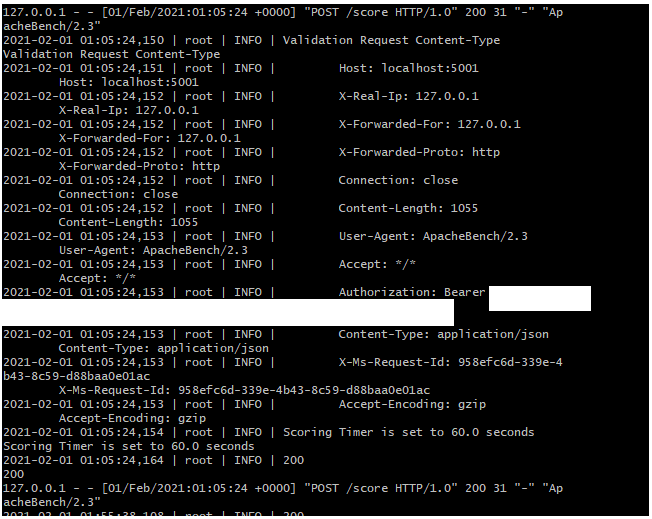
Apache Benchmark (ab) runs against the HTTP API using authentication keys to retrieve performance results. We ran 100 requests against our benchmark. Performance excels well beneath the 60 second mark at ~ 76ms per request.
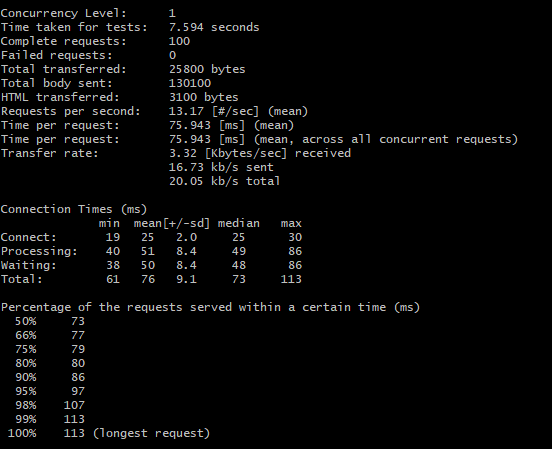
To improve our project in the future we will continue to heavily focus on complete end-to-end automation by:
- Adopting an infrastructure-as-code (IAC) tenet where training, continuous experimentation, and scoring are completely executed via code.
- Scheduling our experiment pipelines to run based on a set recurring schedule and based on updates to our training data.
- Creating a new ML pipeline for batch scoring that is connected to our training pipeline.
- Automatically monitoring data drift.
- Leveraging Azure DevOps / Azure Pipelines to provision this end-to-end machine learning (ML) strategy.
Our main goal is to eventually operationalize ML, for training and scoring, as a continuous integration / continuous delivery and deployment (CI/CD) process.




